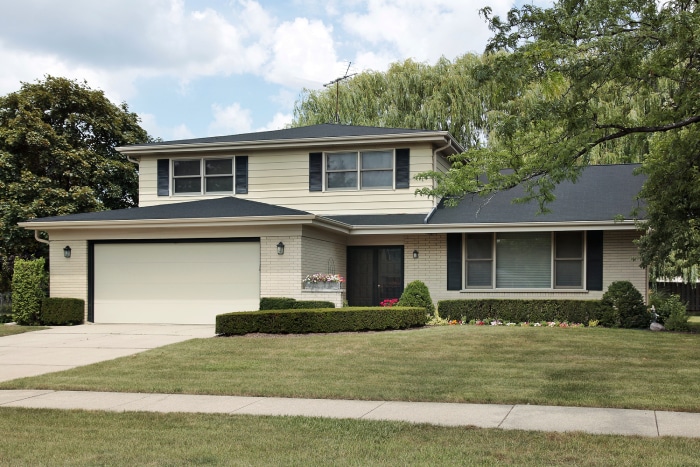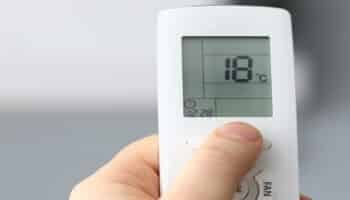We've independently reviewed this article to make sure it's as accurate as we can make it.
To find out more about our article creation and review process, check out our editorial guidelines.
When it comes to the different styles of homes, each can have its own challenges when it comes to heating and cooling them. In this article, I’ll discuss some of the best ways to cool a split-level home.
Many have reported the challenges of keeping the upper level—or levels—of a split-level cool in the summer months. If you’re one of those people, and you’re here looking for answers, stick around. I’ll do my best or provide some solid answers.
Why is it Difficult to Cool a Split-Level Home?
First, let’s talk about the why. Once you understand what’s going on, it might help you better understand the methods to fix the problem.

It’s all about heat transfer convection. The science is simple. Hot air rises but cold air, which is much denser, will drop. So in warmer weather when your air conditioner is running, all that lovely cold air is sinking to your lower levels. Whether you’re in a split-level or three-story house.
If you live in a home that doesn’t have thermostats on each level—which would be about 99% of the multi-level homes in North America—combatting convection is always going to be problematic.
So, what can you do?
Honestly? Maybe nothing. If you live in a home that has a badly designed HVAC system, you might be fighting a losing battle. A badly designed system could include:
- Poor layout of the ductwork
- Leaky ductwork—ducts that weren’t properly sealed at the joints
- Not enough registers and or air returns
- Registers or air returns lacking optimal placement
Before you start spending money, look for these issues. You’ll need a professional, but the good news is you might be able to get it done free. Depending on where you live, free energy audits may still be offered by your local government, so look into that. They’ll be able to tell you all the problems with your heating and cooling systems.
Once you’ve made sure you’re not throwing money into the wind, here are some things you can try to help cool down your home.
Increase Air Flow
The first, and maybe the cheapest fix.
There’s a common misconception that closing off some of your vents will force air to go somewhere else. And while there may be some truth in that, what you’re doing is impeding air flow. For your system to work properly, there must be equal amounts of air in and air out.

Do you have return air vents on the upper level? If so, do you have two of them stacked on top of each other? Depending on where you live, the building code in the last 30 years or so will have a return air vent at ceiling height on the top level and another right underneath it at floor level.
You want to cycle these seasonally. In the summer, open the top return air, and close the bottom. This will pull the very hot air sitting at the ceiling back into your system. In the winter, close the top and open the bottom.
Add Insulation
Do you have attic space, whether it’s finished or not? This is an area to address.
But wait! Doesn’t hot air rise? Why would you want to add insulation to your top level and trap it there?

Because when we talk about hot air rising, we are talking about it happening within the confines of a structure—in this case, your house. But in a different set of conditions, heat will behave very differently.
Your house is subject to something called the stack effect. This is the movement of air due to thermal pressure differences. During the winter months, when the pressure is low, cold air comes inside and moves to the bottom floors. The air gets warmed and moves up.
The reverse happens in the heat of the summer when the air inside the house is cooler than the air outside. Hot air enters through leaks at the top of the house and creates a downdraft. Yeah, it wants to get out of the heat too.
So insulating your attic isn’t just about keeping you warm in the winter. It’s also about blocking heat from entering during the summer and making your bedroom feel like a fire pit.
The level of heat in your attic can be significantly hotter than it is outside—especially if you have a dark roof that’s doing a wonderful job of absorbing heat and making your house hotter.
Then it leaks further down through your ceiling through:
- Duct registers
- Your attic hatch
- Any recessed lighting
- Your plumbing vent stack
So seal those leaks up, add insulation, and next summer, welcome a cooler top level.
Add Zoning to Your Existing HVAC
Adding a zone makes it possible for you to control heating and cooling in different areas and levels. This is done by adding dampers inside your ductwork, which direct air where you want it.
As far as costs go, it’s much cheaper to do this during construction. Having said that, to add zoning to your existing system, it will cost between approximately $500 and $725 for a two-zone system, plus another $150 to $300 for each additional zone you add.
Install a Multi-Zone Ductless Mini Split
First, there is the cost. The system can cost anywhere from $700-$7,000. Then you need to add installation costs, which are between $800-$1,500 per zone.
Since you have a multi-level home, a multi-zone ductless system seems like the perfect answer. Even better if you have a section of your home that’s not only hot in the summer but cold in the winter.
Multi-zone systems have a single outdoor unit attached to multiple indoor units that are typically placed on a wall. In most cases, you can have up to a maximum of 4 indoor units. And they can both heat and cool your home.
In terms of installing this system, it’s fairly easy and doesn’t include what you might have to go through to add zoning. But there is a good chance it will cost you more.
Conclusion
There you have it. 4 different ways to help cool down your split-level home. 2 of them deal with upgrading some of your current components, and 2 more that can actually add more cool air to your surroundings.
But remember. Don’t proceed with either of the 3rd or 4th options before checking the first two. Because you may wind up losing all that new cool air.
Thanks for reading to the end. I hope you learned something helpful. Why not check out the related articles below? Maybe there’s something else we can help you with.







